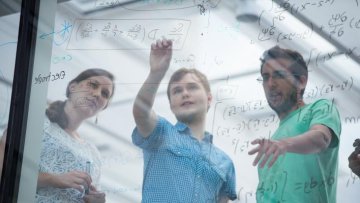Highly accurate integral equation based methods for surfactant laden drops in two and three dimensions
Abstract
In micro-fluidics, at small scales where inertial effects become negligible, surface to volume ratios are large and the interfacial processes are extremely important for the overall dynamics. Integral
equation based methods are attractive for the simulations of e.g. droplet-based microfluidics, with tiny water drops dispersed in oil, stabilized by surfactants. In boundary integral formulations for
Stokes flow, jumps in pressure and velocity gradients are naturally taken care of, viscosity ratios enter only in coefficients of the equations, and only the drop surfaces must be discretized and not the volume inside nor in between.
We present numerical methods for drops with insoluble surfactants, both in two and three dimensions. We discretize the integral equations using Nyström methods, and special care is taken in the evaluation of singular and also nearly singular integrals that is needed in the case of close drop interactions. A spectral method is used to solve the advection-diffusion equation on each drop surface that describes the evolution of surfactant concentration. The drop velocity and surfactant concentration couple together through an equation of state for the surface tension coefficient. An adaptive time-stepping strategy is developed for the coupled problem, with the constraint to minimize the number of Stokes solves, since this is the computationally most expensive part.
For high quality discretization of the drops throughout the simulations, a hybrid method is used in two dimensions, offering an arc-length parameterization of the interface. In three dimensions, a
reparameterization procedure is developed to optimize the spherical harmonics representation of the drop, while conserving the drop volume and amount of surfactant.
We present results from some validation tests and illustrate the ability of the numerical methods in different challenging problems.


